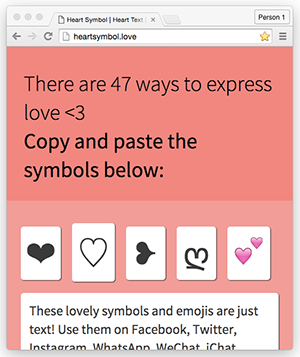After a long hiatus of Adopt a Character coverage, we’re back : )
But first a quick refresher on what Adopt a Character is:
Back in December 2015, the Unicode Consortium launched a new initiative to raise money by allowing people to sponsor Unicode characters. Unicode is the character set which makes it possible to write/send electronic text in almost every conceivable human language. Unicode is also what powers emojis – every cross-platform compatible emoji is essentially a Unicode character. Here’s some more information on Adopt a Character.
So, how much has Adopt a Character raised so far?
The last time we checked up on the Unicode Consortium’s Adopt a Character program was back in May. At that point, 5 months after the launch, the Unicode Consortium had raised about 88k. Well, it’s now been roughly 9 months and we did the math… it looks like the Unicode Consortium has raised 135k. Here’s the breakdown:
- 19 Gold Sponsors X $5,000 each = $95,000 (+$35,000 from May 20th)
- 7 Silver Sponsor X $1,000 each = $7,000 (+$3,000 from May 20th)
- 332 Bronze Sponsors X $100 each = $33,200 (+$8,900 from May 20th)
- Total: $135,200 (+$46,900 from May 20th)
Our Analysis: A Steady Decline In Donations
 Now let’s do some very rough calculations. On March 1st, approximately 2.5 months after launch, Adopt a Character had raised $51,700, which is about $20,680 / month ($51.7k / 2.5). From March to May (2.5 months), Adopt a Character raised an additional $36,600, or roughly $18,300 / month ($36.6k / 2). Since May (4 months), Adopt a Character has raised another $46,900 or $11,725 / month ($135.2k / 4). While these numbers don’t tell the whole story, what we see here is a steady pattern of decline in monthly donations. From about $21k a month, to $18k to $12k.
Now let’s do some very rough calculations. On March 1st, approximately 2.5 months after launch, Adopt a Character had raised $51,700, which is about $20,680 / month ($51.7k / 2.5). From March to May (2.5 months), Adopt a Character raised an additional $36,600, or roughly $18,300 / month ($36.6k / 2). Since May (4 months), Adopt a Character has raised another $46,900 or $11,725 / month ($135.2k / 4). While these numbers don’t tell the whole story, what we see here is a steady pattern of decline in monthly donations. From about $21k a month, to $18k to $12k.
An Interesting Change in Policies
Clearly, the Silver category is the biggest laggard, having raised only 7k – that’s just 7 donations – since December 2015. It seems like the Unicode Consortium has changed it’s policies to try and increase Silver donations.
All sponsors are listed on the Unicode Consortium website, here. When Adopt a Character first launched, only Gold sponsors were allowed to link back to their website. Silver and Bronze sponsors received a call out with their name but no hyperlink. While we do not know the exact date that this policy changed, as of today, both Silver and Gold sponsors are entitled to a link back (information here).
We’ll return in a couple months to see if this change in policy has any impact on Silver donations, but as of now any impact seems minimal. As Rachel Maddow says, watch this space.

 Now let’s do some very rough calculations. On
Now let’s do some very rough calculations. On 
 We last tallied up donations in early March (
We last tallied up donations in early March (






 From December 16th to January 18th (roughly 1 month), the Unicode Consortium raised $50,000 from Adopt a Character. But in the last 1.5 months, from January 18th to March 1st (today), the Unicode Consortium has raised only $1,700.
From December 16th to January 18th (roughly 1 month), the Unicode Consortium raised $50,000 from Adopt a Character. But in the last 1.5 months, from January 18th to March 1st (today), the Unicode Consortium has raised only $1,700.
 But this is Unicode! It’s used in millions of websites and applications. The Adopt a Character campaign was covered by Wired, the Atlantic, VentureBeat, PCWorld and numerous smaller publications. BusinessWire picked up the press release, and it was republished by Reuters. Given the attention it got, and the importance of the Unicode Consortium, it’s somewhat surprising that they only managed to raise $50k in a month.
But this is Unicode! It’s used in millions of websites and applications. The Adopt a Character campaign was covered by Wired, the Atlantic, VentureBeat, PCWorld and numerous smaller publications. BusinessWire picked up the press release, and it was republished by Reuters. Given the attention it got, and the importance of the Unicode Consortium, it’s somewhat surprising that they only managed to raise $50k in a month.


